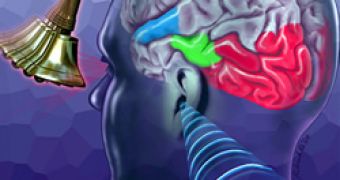Many terrestrial and aquatic species can hear lower and higher frequencies than those detected by humans (infrasound, respectively ultrasounds). Frequency is crucial in defining a sound. Now, an Israeli team sustained by UCLA researchers has showed for the first time, in a research published in the journal "Nature," how just one neuron can enable us to make finer differences in frequencies than animals.
The researchers recorded the activity of neurons in the auditory cortex while volunteers were exposed to sound stimuli.
Other studies made on the auditory cortex had analyzed neural activity in animals exposed to sounds. Such researches skipped the unique traits of the human auditory system. The human auditory cortex has been investigated so far only via non-invasive techniques delivering non-detailed aspects of how the brain reacts to sounds.
The researchers used a new complex clinical procedure, which detects abnormal neural activity aiming at improving the results of surgery of intractable epilepsy.
The team exposed the subjects to artificial sounds, discovering that brain cells in human auditory cortex react with great precision to specific frequencies.
Frequency differences of just a quarter of a tone (to make an idea, imagine that the smallest musical frequency interval is half a tone) were detected by single neurons. This performance greatly overcomes that of the auditory cortex of other mammals (except, perhaps, bats) and could be connected to the speech capacity in humans. This explains why humans differentiate frequencies better than animals and shows the uniqueness of the neural representation of frequency in the human brain.
When the subjects were exposed to real-life sounds, like dialogues, music and background noise, the individual neurons displayed complex activity patterns explained only by this neuronal frequency selectivity. This was known in the case of animals, but this research shows it for the first time in humans. Oppositely to the artificial sounds, behaviorally relevant sounds, like speech and music, trigger supplementary context-linked mechanisms in the brain cells of the human auditory cortex.

 14 DAY TRIAL //
14 DAY TRIAL //